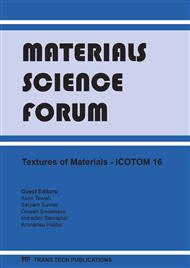p.548
p.554
p.558
p.562
p.566
p.570
p.574
p.578
p.585
Improving the Reliability of EBSD-Based Texture Analysis by a New Large Area Mapping Technique
Abstract:
The relevance of EBSD-based investigations for statements on the macroscopic or mesoscopic behavior of materials is critically relying on the statistical representativeness of the data. Particularly, the statistical reliability of the EBSD-based results (e.g. texture, phase fraction or grain size) remains an open question since the areas observed by the EBSD technique are quite small compared to XRD techniques. It has already been shown that covering larger areas and probing more grains with the help of large step sizes is beneficial in terms of representativeness [1]. On the other hand, small step sizes are beneficial in terms of grain reconstruction and data clean-up. However, step sizes significantly smaller than the average grain size of the material lead to either covered areas or number of probed grains being too small to be representative or to very large datasets and correspondingly long measurement times. In this contribution, the benefits of a new mapping technique [1] that joins the advantages of large and small step size measurements will be demonstrated. The representativeness of the EBSD datasets obtained by classical and this new mapping techniques were compared by calculating the pole figure symmetries of a TRIP steel. The results show that the proposed mapping technique significantly improves the reliability and representativeness of EBSD-based texture measurements.
Info:
Periodical:
Pages:
566-569
Citation:
Online since:
December 2011
Authors:
Keywords:
Price:
Сopyright:
© 2012 Trans Tech Publications Ltd. All Rights Reserved
Share:
Citation:


